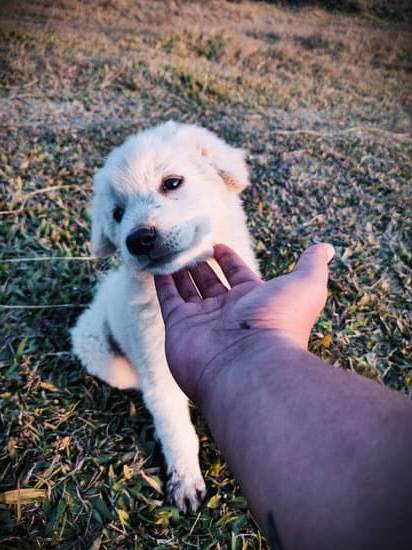Owning a wolf dog can be an enticing but challenging endeavor. These magnificent creatures possess a unique blend of the domesticated dog’s loyalty and the wild wolf’s independence. To successfully train a wolf dog, it is crucial to understand their distinct nature and provide them with the proper guidance and structure they need.
Proper training is essential for any pet, but when it comes to wolf dogs, it becomes even more critical. These animals have specific characteristics and needs that differ greatly from those of domesticated dogs. By gaining insight into their nature, we can establish a strong foundation for a well-behaved and happy pet.
Wolf dogs require a different approach to training due to their instinctual behaviors inherited from wolves. The allure of owning one lies in their majestic appearance and fascinating connection to their wild ancestors. However, these unique traits also bring challenges that owners need to be prepared for. By understanding the intricacies of raising and training a wolf dog, we can create a harmonious environment where both owner and pet can thrive together.
Preparing Your Home and Environment for a Wolf Dog
As the proud owner of a wolf dog, it is crucial to create a suitable living space that accommodates their unique needs. Proper preparation ensures the safety and well-being of your wolf dog, as well as helps prevent potential hazards or escape attempts. This section will provide essential tips on preparing your home and environment for your beloved companion.
Creating a Secure and Spacious Living Space
One of the first steps in preparing for your wolf dog is creating a secure and spacious living space. Wolf dogs have natural instincts to roam and explore, so providing them with ample room to move around is important. A securely fenced yard with high, dig-proof fences is highly recommended to prevent any accidental escapes. Additionally, it’s essential to regularly inspect the enclosure for any weak spots or holes that your curious companion may find.
Removing Potential Hazards and Escape Routes
When creating a safe environment for your wolf dog, it is vital to remove any potential hazards or escape routes from their living space. Ensure that toxic plants, chemicals, or substances are eliminated from areas accessible to your pet.
Additionally, secure any loose wires or cords that could be chewed on by your curious furry friend. Regularly check gates, doors, windows, or any other potential exit points to ensure they are secure and cannot be easily opened by an inquisitive wolf dog.
Incorporating Mental and Physical Stimulation Through Enrichment Activities
Wolf dogs are highly intelligent animals that require mental stimulation to thrive. Incorporating enrichment activities within their living space can keep them engaged and prevent boredom-induced destructive behaviors. Consider providing puzzle toys filled with treats or engaging in interactive games that encourage problem-solving skills. Outdoor obstacles such as agility courses or digging pits can also provide physical exercise while stimulating their minds.
By following these guidelines in preparing your home and environment for a wolf dog, you can ensure their safety while promoting an enriching and stimulating lifestyle for them. Remember, the well-being of your wolf dog is a top priority, and a secure and stimulating environment is essential to their overall happiness and behavior.
Establishing Yourself as the Pack Leader
Understanding the wolf pack hierarchy and its application to training
One of the key aspects of successfully training a wolf dog is establishing yourself as the pack leader. Wolf dogs are descended from wolves, which operate within a hierarchical social structure known as a pack. In order to gain your wolf dog’s respect and ensure effective training, it is important to understand this natural instinct and apply it to your interactions with your pet.
In a wolf pack, there is an alpha or dominant individual who leads the group and makes decisions. As the owner and trainer of a wolf dog, it is crucial for you to assume this role. This means setting clear boundaries, enforcing rules consistently, and being firm but fair in your interactions. By doing so, you will demonstrate leadership and earn your wolf dog’s trust and respect.
Building trust and respect with your wolf dog
Building trust and respect forms the foundation of a strong bond between you and your wolf dog. It is essential to establish trust early on in order for successful training to take place. One way to build trust is by being predictable in your actions and consistent in your responses. This helps your wolf dog feel secure and understand what is expected of them.
Respect can be earned by being fair but assertive when enforcing rules and boundaries. Utilize positive reinforcement techniques such as praise, treats, or playtime when your wolf dog exhibits good behavior or responds correctly to commands. Avoid resorting to harsh punishments or physical corrections, as these can damage the relationship between you and your pet.
Consistency and effective communication through body language and vocal cues
Consistency is key when establishing yourself as the pack leader. Set clear expectations for behavior from the start and enforce them consistently. This means responding immediately to undesired behaviors with appropriate corrections or redirections.
Effective communication with your wolf dog involves understanding their body language as well as utilizing vocal cues. Wolf dogs are highly observant and can pick up on subtle cues from their human counterparts. Use confident body language, such as standing tall and making direct eye contact, to assert your leadership. Additionally, develop a distinct set of vocal commands for training purposes and use them consistently to reinforce the desired behaviors.
By properly establishing yourself as the pack leader, you will create a strong foundation for training your wolf dog and nurturing a respectful and harmonious relationship.
Essential Basic Commands and Obedience Training
To ensure a well-behaved wolf dog, it is crucial to focus on essential basic commands and obedience training. This section will provide guidance on teaching commands such as sit, stay, come, and heel, using positive reinforcement techniques, patience, repetition, and gradual progression in training sessions.
Teaching Commands
When training your wolf dog, it is important to start with the basics. Begin by teaching commands like sit, stay, come, and heel. These commands are not only essential for their safety but also for their overall behavior and interaction with you and others.
– Sit: This command helps establish boundaries and control in different situations. Hold a treat close to your wolf dog’s nose and slowly move your hand upwards – this will cause their head to tilt back naturally. As their head raises up, their bottom will naturally lower into a sitting position. As they sit down, say “sit” and reward them with praise or a treat.
– Stay: Teaching your wolf dog to stay can be vital in certain situations where you want them to remain in one place until given permission to move. First, ask your wolf dog to sit. Then put out your hand with an open palm while saying “stay.”
Take small steps backward while keeping eye contact with them. If they try to follow you or get up from the sitting position before you release them from the command, calmly guide them back to the original position without rewarding them until they successfully stay without moving.
– Come: The recall command is crucial for ensuring your wolf dog’s safety outdoors. Start in a safe environment with minimal distractions. Call your wolf dog’s name followed by “come” in an enthusiastic tone while opening your arms wide or kneeling down with open arms as an inviting gesture. When they come towards you, reward them immediately with praise or treats. Gradually increase the distance and distractions as they become more reliable with the command.
– Heel: Teaching your wolf dog to walk calmly beside you is essential for cooperation during walks. Start by walking with them on a leash at your side. Whenever they pull or get ahead, change direction abruptly while giving the command “heel” to redirect their focus to you. It is important to reward them with praise or treats when they walk calmly by your side.
Positive Reinforcement and Training Techniques
Positive reinforcement techniques are highly effective in training wolf dogs. Reward-based training helps create a positive association between following commands and pleasing their owners.
– Rewards: Use high-value treats that are especially enticing to your wolf dog during training sessions. Rewarding them immediately after they successfully perform a command reinforces their behavior positively. Additionally, praise, petting, toys, or play can also be used as rewards depending on what motivates them.
– Patience, Repetition, and Gradual Progression: Wolf dogs learn through repetition and consistency, so it is vital to practice commands regularly. Keep training sessions short and frequent to maintain engagement and prevent boredom or frustration. As your wolf dog becomes proficient in one command, gradually increase the difficulty by adding distractions or practicing in different environments.
It’s important to remember that each wolf dog is unique and may respond differently to training techniques. Stay observant of their body language and adjust your approach accordingly. Building trust and a strong bond with your wolf dog will help make obedience training more successful and enjoyable for both of you.
Socializing Your Wolf Dog with Humans and Other Animals
One of the most important aspects of training a wolf dog is socialization. As wolf dogs have a natural instinct to be wary of humans and other animals, it is crucial to start socializing them from an early age to prevent aggression and fear. By properly introducing your wolf dog to different people and animals, you can help them become well-adjusted pets who are comfortable in various situations.
When socializing your wolf dog with humans, it is important to expose them to a variety of individuals, including men, women, children, and people from different ethnic backgrounds. This will help them become familiar with different human characteristics and feel more at ease around people they encounter throughout their lives. Start by introducing your wolf dog to close family members and friends who can provide positive experiences and reinforce good behavior.
In addition to humans, it is essential to socialize your wolf dog with other animals. However, it is crucial to proceed with caution when introducing your wolf dog to unfamiliar animals. Begin by introducing them gradually in controlled environments such as obedience classes or supervised playdates.
Keep interactions short initially and monitor their behavior closely for any signs of aggression or discomfort. If necessary, consult with a professional trainer experienced in working with wolf dogs for guidance on proper introduction techniques.
To keep track of your progress in socialization, consider keeping a record of the people and animals that your wolf dog interacts with. Note their reactions and behaviors during each interaction. This will help you identify any patterns or areas that require further attention in their socialization journey.
Overall, successful socialization plays a significant role in the development of a well-rounded wolf dog that can coexist peacefully with humans and other animals. With patience, consistency, and positive reinforcement techniques, you can ensure that your wolf dog grows up to be friendly and confident in various social settings.
| Step | Socialization |
|---|---|
| 1 | Expose your wolf dog to various humans, including men, women, and children. |
| 2 | Gradually introduce your wolf dog to unfamiliar animals in controlled environments. |
| 3 | Maintain a record of interactions to track progress and identify areas that need further attention. |
Addressing Natural Instincts and Prey Drive
One of the key aspects to consider when training a wolf dog is addressing their natural instincts and prey drive. Wolf dogs have a strong predatory instinct due to their genetic makeup, which can manifest in behaviors such as chasing small animals or exhibiting hunting behaviors. It is important for owners to understand these natural instincts and find safe ways to channel them.
Controlling and channeling predatory behaviors can be achieved through structured playtime activities. This includes playing games that simulate hunting instincts, such as hide-and-seek or tug of war with appropriate toys. These games help satisfy their drive while keeping them mentally stimulated. It’s essential to provide plenty of mental and physical exercise for your wolf dog to prevent destructive behaviors that may arise from pent-up energy.
Additionally, it is crucial to teach your wolf dog the “leave it” command. This command will help redirect your pet’s attention away from potential prey or unwanted objects. Start by teaching the command indoors with low-value items, gradually increasing the difficulty by using more tempting items or even incorporating live prey-like toys. Consistency, patience, and positive reinforcement are key when teaching this command.
By addressing natural instincts and prey drive in a controlled manner, you can ensure that your wolf dog remains content and well-behaved. Providing outlets for their innate needs and instincts will lead to a more fulfilled pet who is less likely to exhibit destructive behaviors stemming from frustration or boredom.
Managing the Wolf Dog’s Energy and Exercise Needs
Wolf dogs are known for their high energy levels and need for physical activity. It is essential to provide them with an appropriate outlet for their energy to prevent behavioral issues and maintain their overall well-being. In this section, we will discuss how to effectively manage a wolf dog’s energy and exercise needs to ensure they remain happy, healthy, and stimulated.
Designing a suitable exercise regimen based on your wolf dog’s size and energy levels is crucial. These dogs require more exercise compared to typical domesticated dogs. Daily walks or runs alone may not be sufficient to meet their needs. Consider engaging in activities that match their natural instincts, such as providing opportunities for them to run off-leash in an enclosed area or participating in obedience trials or agility courses.
Mental stimulation is equally important for a wolf dog’s overall well-being. Interactive toys and puzzles can help keep their minds engaged and prevent boredom-induced destructive behaviors. Engaging in training sessions that challenge them mentally is another great way to provide mental stimulation while building a stronger bond with your pet.
| Managing the Wolf Dog’s Energy and Exercise Needs |
|---|
| – Designing a suitable exercise regimen |
| – Providing mental stimulation through interactive toys |
| – Engaging in activities like hiking, running, and obedience trials |
Consistent Training for Lifelong Success
The importance of ongoing training and refresher courses
Training a wolf dog requires consistent effort and dedication. It is essential to understand that training does not end once the basic commands are learned. Ongoing training throughout your wolf dog’s life will help reinforce their obedience, ensure their safety, and strengthen the bond between you and your pet.
Refresher courses can be an excellent way to touch up on your dog’s training skills or address any specific behavior issues that may arise. These courses offer professional guidance and provide a structured environment for both you and your wolf dog to learn and grow together. By attending these classes, you can gain new insights into advanced training techniques while reinforcing the foundation of basic commands.
Dealing with setbacks and challenges in training
While consistent training is key to success, it is important to anticipate setbacks and challenges along the way. Wolf dogs possess unique instincts due to their wild heritage, which can sometimes make them more challenging to train than domesticated dogs. Patience, perseverance, and a positive mindset are crucial when faced with difficulties during the training process.
If you encounter setbacks or struggles during your wolf dog’s training journey, it is essential not to get discouraged. Instead, take a step back, evaluate the situation objectively, and adjust your approach if needed. Seek guidance from professional trainers or behaviorists who have experience working with wolf dogs if necessary. Remember that every dog learns at their own pace, so be patient and adapt your methods as required.
Staying updated on recent training techniques and resources
The world of canine training is ever-evolving, with new techniques and resources constantly being developed. To ensure lifelong success in training your wolf dog, it is vital to stay updated on these advancements.
Consider joining online forums or communities where fellow wolf dog owners share their experiences, tips, and advice. These platforms can provide valuable insights and support as you navigate the training process. Additionally, staying connected with professional trainers or attending workshops and seminars can help you gain knowledge about the latest training methods.
By keeping up to date with current training techniques, you can continue to refine your skills as a responsible owner and trainer. This dedication to ongoing learning will ultimately contribute to a healthier, happier relationship with your wolf dog.
Conclusion
In conclusion, training a wolf dog requires dedication, patience, and a deep understanding of their unique nature. By following the steps outlined in this article, you can establish yourself as the pack leader and foster a harmonious relationship with your furry companion.
Owning a wolf dog comes with its challenges, but the rewards are immeasurable. These majestic creatures offer an unparalleled bond and loyalty to their owners. As you embark on this journey, it is crucial to remember that training is an ongoing process. Consistency and continued learning will ensure that your wolf dog becomes a well-behaved and happy pet.
Throughout the training process, it is vital to prioritize patience, understanding, and commitment. Remember that each wolf dog is unique and may progress at their own pace. Set realistic expectations and be prepared for setbacks along the way. With perseverance and positive reinforcement techniques, you can overcome any obstacles that arise.
Responsible ownership of a wolf dog also means staying updated on recent training techniques and resources. Attend refresher courses or consult with professional trainers to keep refining your skills as an owner. This ongoing education will not only benefit your furry friend but also deepen the bond between you.
In nurturing a fulfilling relationship with your wolf dog, always prioritize their mental and physical stimulation needs. Engage in activities like hiking, running, or obedience trials to help them release their energy in a positive way. Additionally, provide plenty of interactive toys and puzzles for mental enrichment.
Ultimately, by following these guidelines and embracing the unique nature of wolf dogs, you can create a thriving bond with your four-legged friend based on trust and respect. With time and effort invested into training them properly, you’ll be rewarded with the companionship of an extraordinary animal who will bring joy into your life every day.
Frequently Asked Questions
Are wolf-dogs easy to train?
Wolf-dogs, which are a mix between a wolf and a domestic dog, can present some challenges when it comes to training. They possess both the wild instincts of a wolf and the trainable traits of a domestic dog. Training them requires patience, consistency, and understanding their unique needs.
While they have the capacity to learn various commands and behaviors, their strong independent nature can make them less responsive to traditional obedience training methods. Positive reinforcement techniques, such as reward-based training, tend to work best with these animals. It is crucial to approach their training with respect for their wild heritage and ensure their needs for mental stimulation and physical exercise are met.
Will a wolf dog protect its owner?
The protective instincts of wolf dogs vary depending on individual genetics and early socialization experiences. Generally speaking, they may display some level of instinctual guarding behavior towards their owners or their territory. However, it is important not to rely solely on these instincts for protection purposes.
Proper socialization from an early age is crucial in shaping their behavior towards strangers or potential threats. Responsible ownership includes providing adequate training and guidance so that they understand appropriate reactions in different situations. Ultimately, the specific protective behavior of a wolf-dog will depend on its unique personality traits, upbringing, and individual temperament.
How do you socialize a wolf dog?
Socializing a wolf-dog is essential to help them develop appropriate behavior around other animals, people, and unfamiliar environments. Early socialization from puppyhood is particularly critical as it shapes how they interact throughout their lives. Exposure to various environments, sounds, sights, smells, as well as positive interactions with people and animals can help avoid behavioral issues associated with fear or aggression later on.
Gradual introductions in controlled settings with proper supervision are necessary when introducing new experiences or individuals into their world. Professional trainers experienced with wolf-dogs can provide valuable assistance by utilizing positive reinforcement techniques during socialization sessions that gradually expose them to new stimuli while reinforcing desired behavior patterns like calmness and non-reactivity. Patience, consistency, and ongoing socialization efforts are essential to ensuring that a wolf-dog becomes well-adjusted and comfortable in diverse situations.

Welcome to the blog! I am a professional dog trainer and have been working with dogs for many years. In this blog, I will be discussing various topics related to dog training, including tips, tricks, and advice. I hope you find this information helpful and informative. Thanks for reading!





